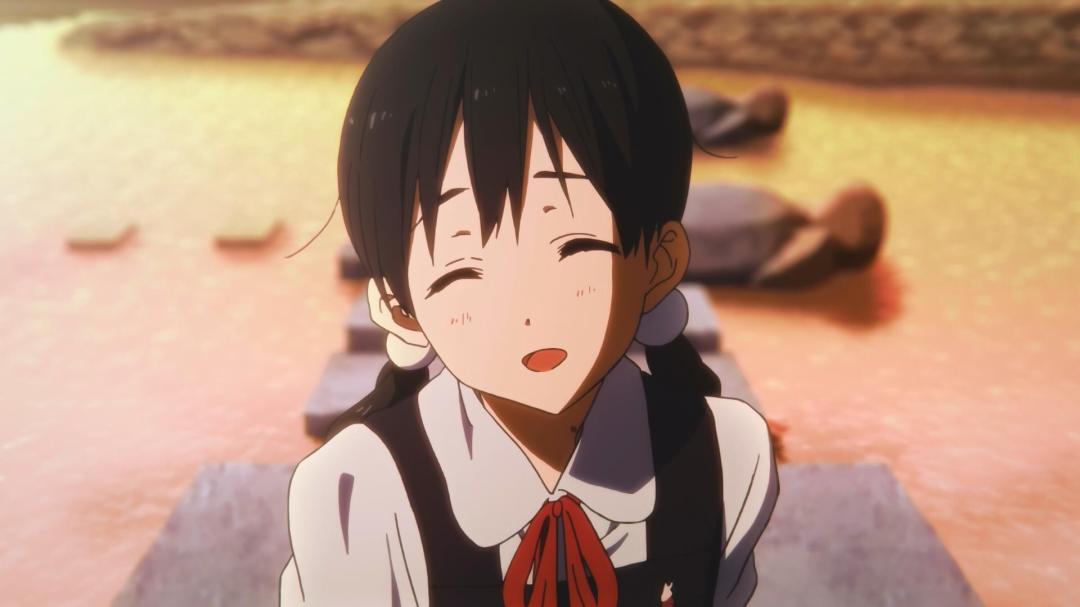I’ve talked throughout this blog about Yamada Naoko — Kyoani’s poster director. Throughout the years of watching anime or media in general, I’ve come to grow immensely attached to this relatively young director's work. Through an explanation of Kyoani, Yamada Naoko, her style, and her masterful works, I will attempt to briefly fill in the gaps about … Continue reading Why Kyoani’s Yamada Naoko is the greatest director of our time: Part 2 — The Tamako Series
Extensive Analysis of Bakemonogatari: What makes it so unique? – Hitagi Crab 1
This series will be an analysis of Bakemonogatari, attempting to look at every single element of the show, frame by frame, for me to truly understand why I find this show so fascinating. Quick warning that this post, and those following in this series, is going to be closer to an analytical essay looking at … Continue reading Extensive Analysis of Bakemonogatari: What makes it so unique? – Hitagi Crab 1
Why Kyoani’s Yamada Naoko is the greatest director of our time: Part 1 — K-On
I’ve talked throughout this blog about Yamada Naoko — Kyoani’s poster director. Throughout the years of watching anime or media in general, I’ve come to grow immensely attached to this relatively young director's work. Through an explanation of Kyoani, Yamada Naoko, her style, and her masterful works, I will attempt to briefly fill in the gaps about … Continue reading Why Kyoani’s Yamada Naoko is the greatest director of our time: Part 1 — K-On
Yamada Naoko’s Liz and the Blue Bird (And A Silent Voice) — Emotions Through Camera
Through A Silent Voice, Yamada Naoko established herself as one of the greatest anime directors of our time. What followed after was her more experimental piece, Liz and the Blue Bird, the film which I consider the best that anime has produced. In this post, I will be running through the choices that Yamada Naoko … Continue reading Yamada Naoko’s Liz and the Blue Bird (And A Silent Voice) — Emotions Through Camera
Garden of Sinners 1 – How to Build Atmosphere
I have always had a hard time explaining why I like the Kara no Kyoukai movies (or Garden of Sinners from now on) to the extent that I do. To me, the Garden of Sinners movies have been one of the strangest series I have watched. While I see the movies as sometimes confusing, indirect, … Continue reading Garden of Sinners 1 – How to Build Atmosphere
Hyouka’s Ingenious Cinematography and Aesthetics
Expositions are boring. This was how I used to think for the longest time. I mean, who really wants to watch characters talking while sitting in a cafe or walking down the street when you can be watching something more exciting happen, some type of action or drama? But if watching Bakemonogatari taught me anything, … Continue reading Hyouka’s Ingenious Cinematography and Aesthetics
Kubikiri Cycle: the Portrayal of Nietzsche’s Idea of Genius
Nietzsche’s portrayal of what a genius is and how people treat them has been one of the fundamental conceptual building blocks of Author NISIOISIN, who has established himself as one of the best light novel authors of recent times. His most popular work, the Monogatari Series, has been adapted into one of the most critically … Continue reading Kubikiri Cycle: the Portrayal of Nietzsche’s Idea of Genius
The Suspension of Disbelief in No Game No Life
The willing suspension of disbelief if a concept in film, or in media just in general, which describes when the audience avoids thinking critically to believe a concept for the sake of enjoyment. And when the audience breaks the suspension of disbelief, the audience flips off that switch that prevents them from thinking about that … Continue reading The Suspension of Disbelief in No Game No Life
The Relaxing World of Tanaka-Kun is Always Listless
It’s hard to see exactly why slice of life, a genre that is merely a series of realistic events without a significant “plot”, seems to be appealing to so many. Anime viewers, including myself, spend countless hours watching japanese highschool girls going camping, playing in a school band, or running cafes in a pseudo-french, rabbit … Continue reading The Relaxing World of Tanaka-Kun is Always Listless








